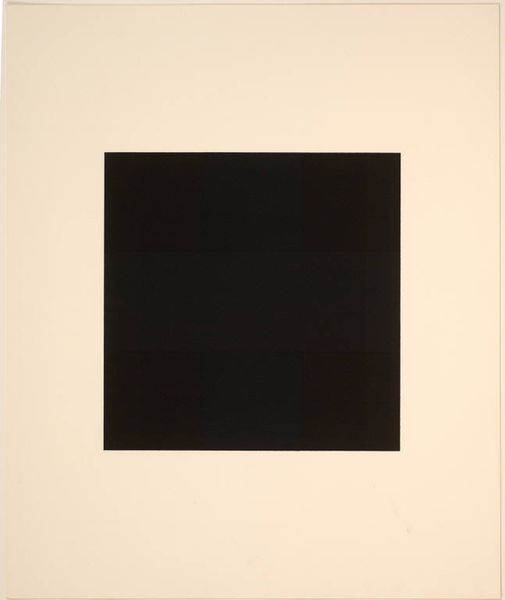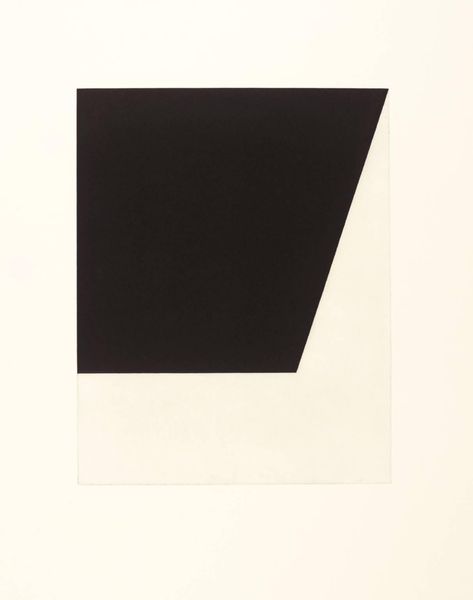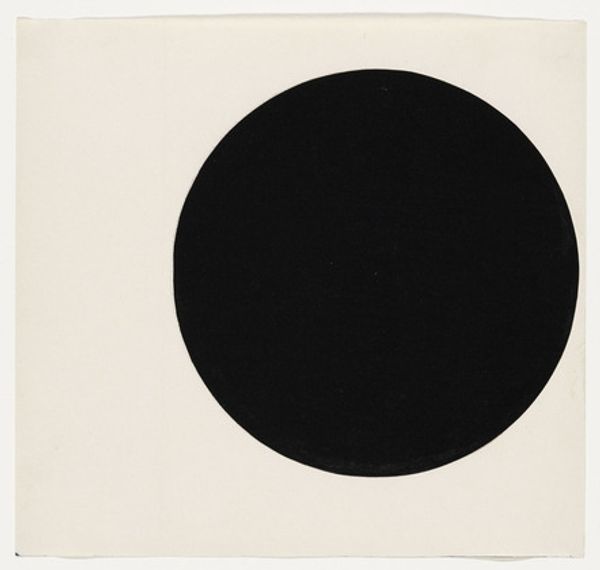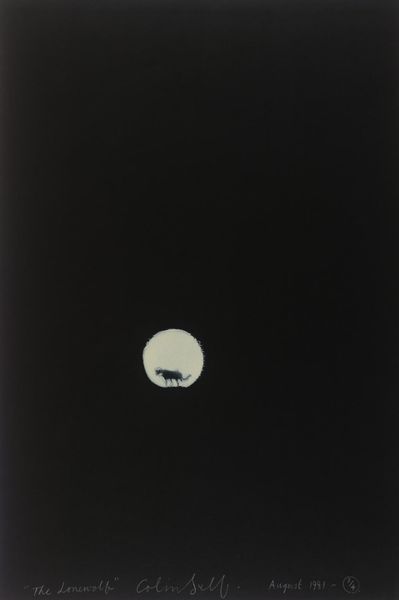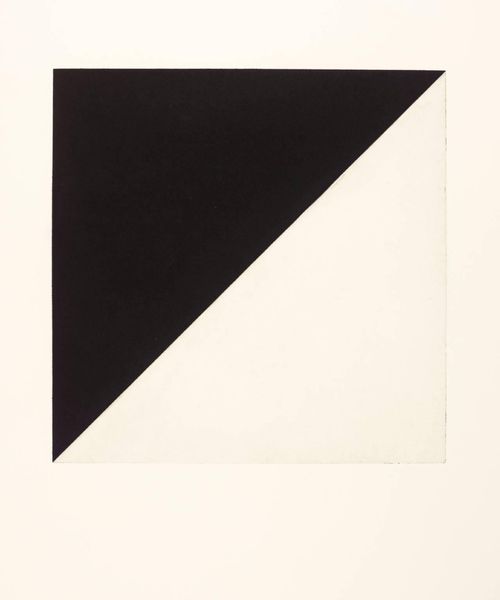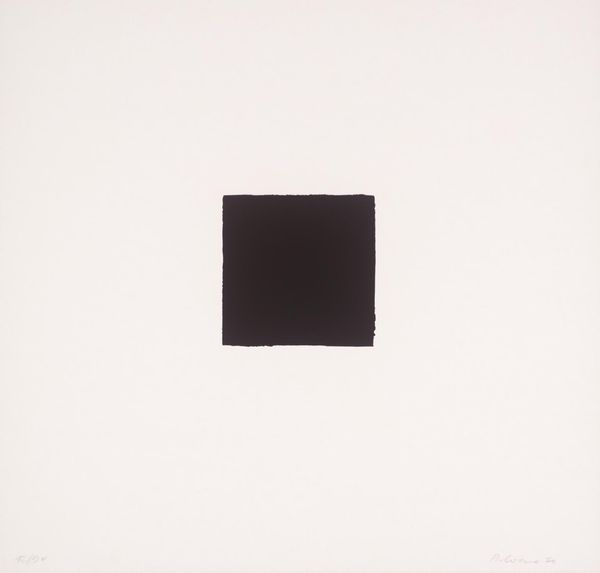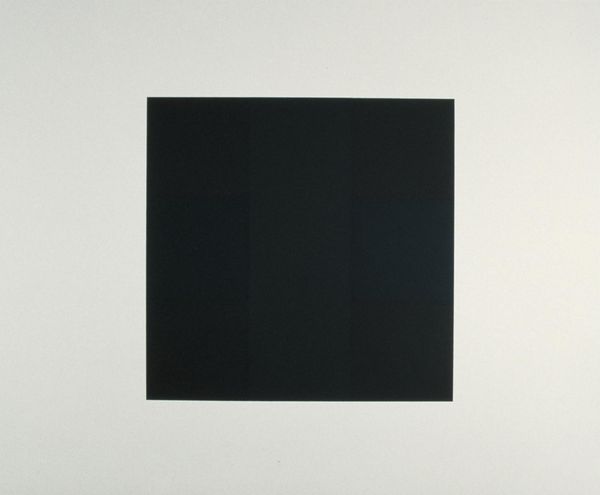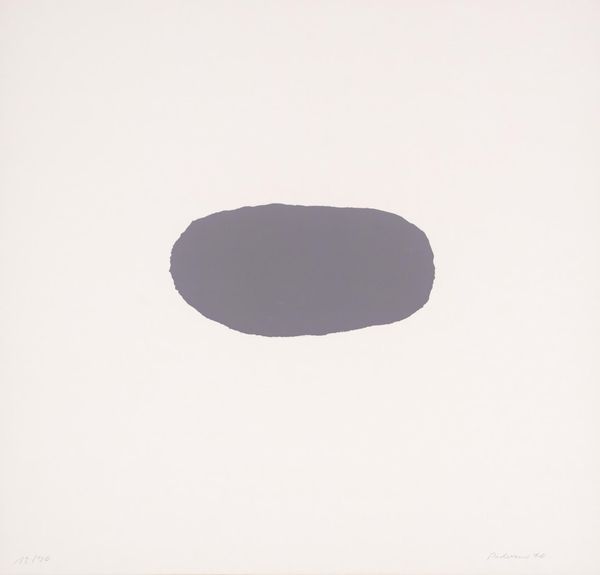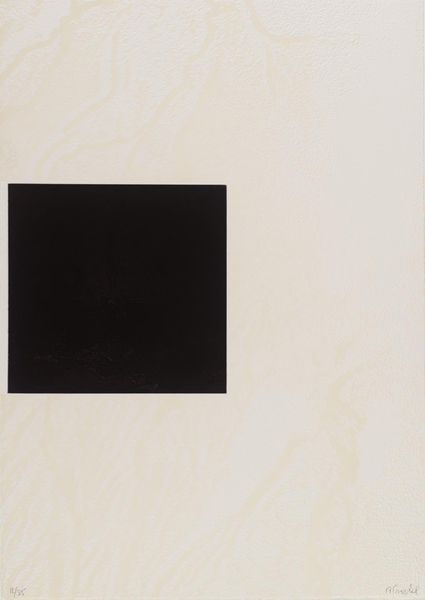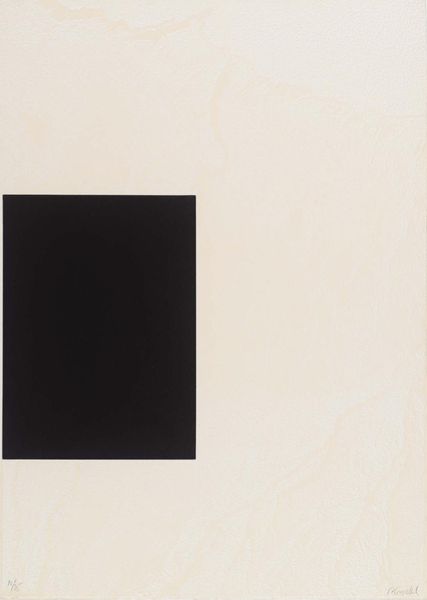
painting
#
abstract-expressionism
#
negative space
#
painting
#
minimalism
#
circle
#
colour-field-painting
#
form
#
geometric
#
geometric-abstraction
#
abstraction
#
hard-edge-painting
#
monochrome
Copyright: (c) Ellsworth Kelly, all rights reserved
Editor: This is Ellsworth Kelly’s "Study for White Plaque. Bridge Arch and Reflection" from 1951. It’s striking – two black semi-circles conjoined on a white background. There's almost something industrial about it, like a blueprint. What should we be looking for in this piece? Curator: It's fascinating how Kelly transforms everyday architectural elements into minimalist forms. We should be examining the materials and the labor involved. It isn't simply about aesthetic pleasure. How do the material properties—the texture of the paint, the flatness of the surface—affect our perception? Editor: That's a good point, I was so focused on the shape! Does the title indicate the use of "plaque" to draw us to materiality? Curator: Exactly! The "plaque" and the method of its making highlight the relationship between industrial production and art. Is this “high art” or is this referencing everyday materials used in infrastructure, or buildings? Consider the time period; post-war America, booming industry, new construction… it’s all intertwined. Think about the surface – does it look hand-worked or mass-produced? Editor: I see what you mean, the flatness gives it a very manufactured feel. Does considering that influence how we should think about abstract expressionism which he's often lumped together with? Curator: Absolutely. Kelly is using the language of abstraction but subverting the emotional intensity associated with Abstract Expressionism, using techniques linked to a consumerist society. What does this tell us about the evolving role of the artist and the definition of "art" itself? Editor: So, rather than a personal expression, it’s more a reflection on industrial processes, cleverly disguised. Curator: Precisely. Kelly asks us to consider where artistic value lies. The making and context really reframes it! Editor: That’s really given me a fresh perspective on minimalism and abstract art in general.
Comments
No comments
Be the first to comment and join the conversation on the ultimate creative platform.
